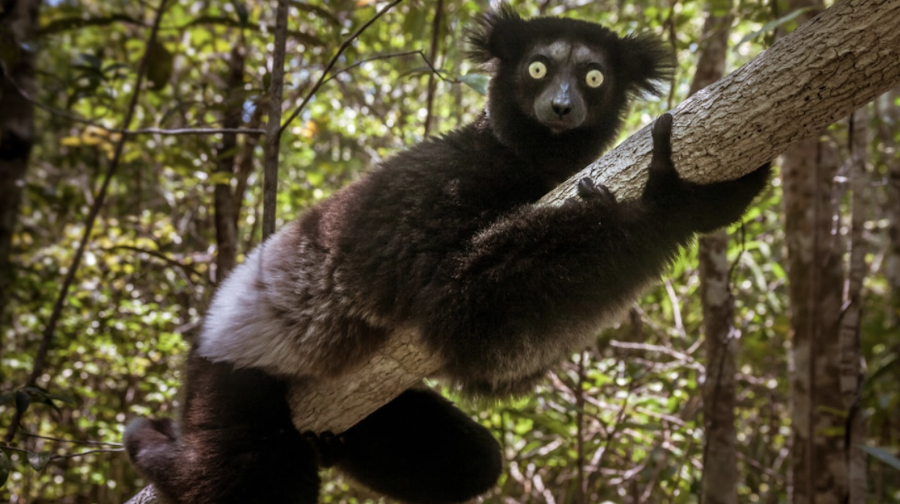This singing lemur is the first known nonhuman mammal with “categorical rhythm”

- Only a handful of nonhuman animals are thought to possibly have an innate sense of rhythm.
- After studying a species of lemur in Madagascar for 12 years, researchers found evidence that a species called indri possess categorical rhythm.
- Categorical rhythm refers to a rhythm in which the time between successive beats is consistent or precisely doubled, regardless of tempo.
Beyond the steady thumping of our hearts, rhythm is omnipresent in our lives. As babies and children, we were rocked to sleep. As grownups, a driving beat is all it takes to get most of us moving. It’s connected to our sense of time passing, since when we hear a series of beats, we anticipate when the next one will land. If our expectations aren’t quite met, we feel it. Savvy drummers know that when they plant a backbeat ever-so-slightly late, we perceive the rhythm as soulful or funky. When it comes just a shade early, we feel a sense of urgency.
It’s unclear exactly which other animals also possess an awareness of rhythm. Studies suggest that songbirds and parrots have some sense of rhythm, but evidence on the ability within other animals is sparse.
A study recently published in the journal Current Biology reveals that there is at least one other mammal with a sense of rhythm: an endangered, “singing” lemur that lives in the rainforests of Madagascar. Called the indri, the primate’s basic sense of rhythm seems similar to that of humans. The discovery may lead researchers to other rhythmic mammals, and it may also provide clues about when in our evolutionary family tree a sense of rhythm first appeared.
Categorical rhythm and singing lemurs
Across human cultures and musical styles worldwide, people share an awareness of “categorical rhythm.” The term describes a rhythm in which the time between successive beats is consistent or precisely doubled, regardless of the rhythm’s tempo, or speed. That is, successive beats with a 1:1 ratio or a 1:2 ratio.
Our sense of rhythm isn’t without limitations, though. Previous research has found that if the time between notes is too long — three seconds or greater — we get lost.
Interested in finding out if other mammals shared categorical rhythm, it seemed to the scientists that an animal who produces songs would be a logical place to start. The black and white indri — one of the world’s largest lemurs — fits the bill.
12 years of listening
Over a dozen years, researchers listened in on and recorded songs from 39 indri belonging to 20 groups in the rainforests of Madagascar. This amounted to about 1 percent of the local population. It turned out that indri songs are structured in categorical 1:1 or 2:1 ratios. Although males and females tend to sing at different tempos, their beats remained categorical. This makes the indri the first known nonhuman mammal with rhythm. The researchers also found that the members of the group harmonize with each other, in pairs or in larger “choruses.”
Another humanlike rhythmic trait: The recordings show the indri employing a common human musical technique, the ritardondo, where a rhythm is deliberately slowed. In human music, this is typically done for dramatic purposes.
Given that the most recent common ancestor for humans and the indri existed quite long ago — 77.5 million years — the researchers suspect that our rhythm sense didn’t come from a common ancestor. Could categorical rhythm have provided us and other animals some sort of evolutionary advantage? It’s still unclear. But the researchers hope that other endangered “musical” species are similarly investigated before it’s too late to help us figure out who’s got the beat, and why.





